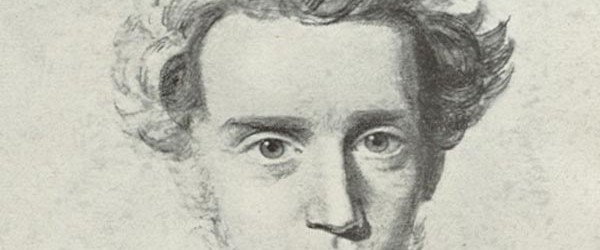
{Commentary} Kierkegaard’s Dancing “Knight of Faith”
Commentary, CultureZouch contributor, J.M. Hall, takes a playful leap of the imagination by drawing a connection between dance and the central ideas in the works of the famous Danish philosopher, Soren Kierkegaard, whose birthday is today.
Part of what makes Kierkegaard so interesting as a philosophical figure is the way his work intersected with his life, so it makes sense to pause and reflect on his philosophy on the eve of his birthday, May 5th. Today, the most famous thing from his life is his breaking off his engagement to the woman he desperately loved, in order to save her innocence from his chronic depression. In his own lifetime, however, Kierkegaard was also famous for spending his days walking the streets of his hometown of Copenhagen, Denmark where he conversed at length with strangers (much like his hero Socrates), and for spending his nights at the theater. And to return to his philosophy, his theatricality is the most famous thing about it, too.
In addition to a series of books in his own name, Kierkegaard also wrote a simultaneous series under a variety of pen names, each of which is a kind of funny riddle as to the book’s contents. For example, the alleged author of Fear and Trembling: A Dialectical Lyric, a book about the incommunicable silence of faith, is “John the Silent.” The overall arc of this series is a journey through three stages of human existence, which Kierkegaard calls the “aesthetic,” the “ethical” and the “religious.” To get from the aesthetic to the ethical stage, he claims, you have to make a real commitment (like the one Kierkegaard himself broke with Regina). And to get from the second stage to the third, you have to make what Kierkegaard calls “the leap of faith,” at which point you become “the knight of faith.”
The first surprising thing about this leap is that in many languages, (including Latin, which Kierkegaard read fluently) the word for “leap” is also the word for “dance.” And the second surprising thing is that this dancing leap lands you in the middle of the crowd, where you immediately disappear, knightly armor invisible to all. In other words, the leap takes you full circle (or dancing spiral) from (1) an ordinary person seeking pleasure, to (2) an ethical person committed to rules and duty, to (3) a religious person who looks identical, from the outside, to the ordinary person you used to be. This circular method in philosophy is called “dialectic” (as in the subtitle of Kierkegaard’s book, Fear and Trembling) and it is central to the work of the most famous philosopher of his own era, namely G. W. F. Hegel.
On the one hand (or foot), Kierkegaard’s entire aesthetic-ethical-religious series of books was intended in part to mock Hegel’s dialectic. But on the other one, Kierkegaard recognized something elegantly beautiful in the dialectic. In fact, he once commented that if Hegel’s whole system had been a joke, he would have been the greatest philosopher of all time. Thus, the greatest flaw in Hegel’s dialectical system, according to Kierkegaard, is that it lacks a sense of humor. For Kierkegaard, however, humor is absolutely vital—so much so that it even bridges the gap between his ethical and religious stages of existence—which means that you go from morality to the divine, for him, without the gravity-defying lightness of laughter. And this suggests that, although the “leap of faith” is indeed a gracefully perfect circle (like Hegel’s dialectic), it is a lighthearted and comical circle of graceful perfection.
And this means, finally, that Kiekegaard’s leaping knight of faith is like the theater which he attended so religiously, complete with the gravity-defying lightness of the corps de ballet. So, to get a clearer picture of all this, I will now conclude with the following invitation: Imagine, if you will, a theatrical stage in your own hometown, on which is standing a crowd of Kierkegaard’s pretend-authors (including “Victor Eremita,” “Judge William,” “A,” and “Johannes the Seducer,” just to name the authors of one of his many books). Curious, you step onto the stage yourself, and begin moving from one pretend-author to the other, listening as they spar, in a semicircle on the stage, over the best way for us to move through our world. Perhaps, you’re even feeling friendly enough to shake the hand of each of them as you introduce yourself. Then, when you get to the last one, “John the Silent,” he gestures to you, inviting you in his silent way to take the leap of faith yourself. Surprised, but in a moment of courage (or madness?) you bend a supporting knee, and launch into the air in a glorious grand jeté…
…and then you land, suddenly anonymous, in an empty seat just, off-center in the main orchestra seating in the audience. Though initially flustered, as you begin to get your bearings, you notice that there is a man in the seat next to you, with large features set beneath an almost-comically large sweep of hair. He smiles knowingly, hands you a copy of a book called Works of Love, which he wrote under his own name, and then invites you to join him outside. There, on a fresh spring evening full of jasmine, you promenade together down the streets of your hometown, enjoying a different dance this time, with Kierkegaard himself. Don’t forget though, before the sun rises, to wish him a happy birthday!






















